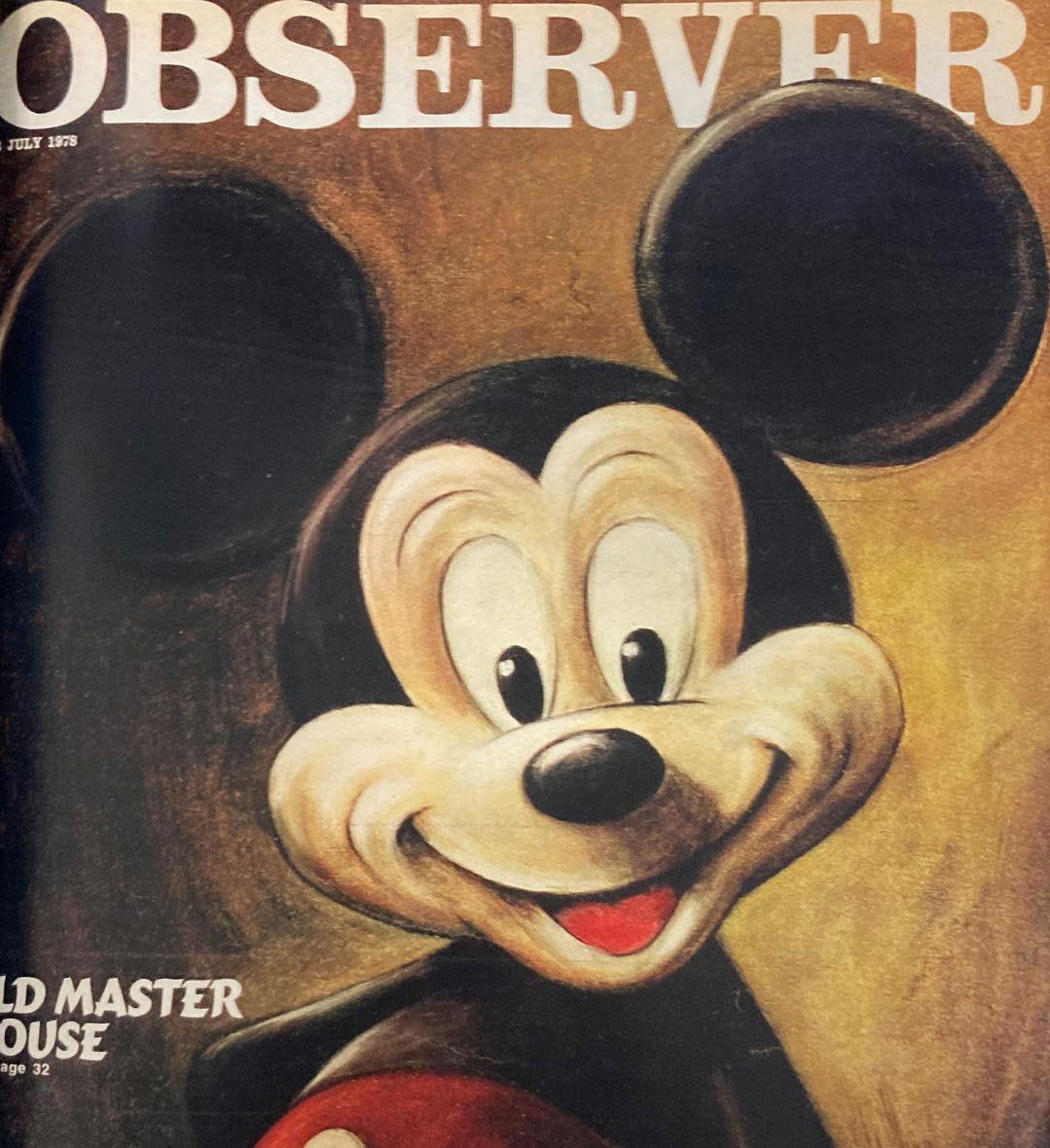When Disney lost its way – scenes from the studio, 1978

Could Disney recapture its old magic? In 1978, the Observer headed to LA to find out what the mouse men had brewing and if Walt would have approved.
Things were changing: the great man’s office had been ‘embalmed’, dismantled and taken to Disneyland to become ‘a shrine gazed upon by the masses’. That felt symbolic of the studio’s ambition to innovate and to finally match the joy (and revenue) of its earlier prestige productions, from Snow White to Mary Poppins. A ‘multimillion-pound resurrection’ was under way; veteran studio artist Eric Larson had examined the work of more than 1,000 young animators and cartoonists and hired 30 of the most imaginative. ‘People who draw well are two a penny. What we needed was the creative artist.’
Now that he had them, what had their feverish imaginations concocted? The revival had kicked off with a return to rodents. The Rescuers, about a band of heroic mice, was ‘Disney’s biggest commercial and critical success in some years’. They were following up with Pete’s Dragon, mixing animation and live action to bring the story of a ‘Mary Poppins with a tail and hot breath’ to life.
The animators’ biggest focus, though, was the technically ambitious fantasy The Black Cauldron, based on a series of Welsh fairy tales. The enthusiastic and excitable young team promised mist and mystery, ‘dark forests and demonic figures’; the studio was keen to stress it would still be strictly family-friendly: ‘We need not imagine that Uncle Walt’s heirs are turning to sex and violence.’ Most of all, it was about bringing emotion back: the ‘magic, wonder and terror that made Snow White so memorable’.
Perhaps, despite the family-friendly guarantee, there was a little too much terror in the brew. The Black Cauldron took another seven years to finish; several scenes were deemed too upsetting for children in test screenings and the finished version bombed at the box office, recouping less than half what it cost to make. They should have stuck to mice.


